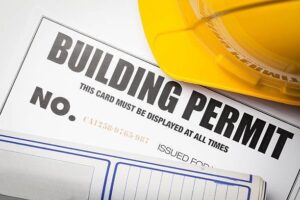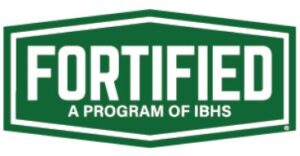Protecting Lives, Homes, and Businesses
When it comes to constructing homes, businesses, or any other structures, building codes are not just a bureaucratic hurdle to jump over—they are essential guidelines designed to ensure safety, durability, and resilience. While we may not think about them daily, building codes and regulations are the unseen frameworks that safeguard our properties and lives, particularly when faced with catastrophic weather events. In today’s world, where natural disasters seem to be increasingly common, paying close attention to these codes has never been more important.
 Building Codes: The Foundation of Safety
Building Codes: The Foundation of Safety
Building codes are established by local, state, and federal authorities to ensure that structures are built to specific safety standards. These regulations cover everything from the materials used in construction to electrical systems, plumbing, and structural integrity. The purpose is to create buildings that can withstand normal wear and tear, as well as extraordinary situations like earthquakes, hurricanes*, floods, and fires.
Failing to follow these codes can lead to severe consequences, including building failures, expensive repairs, and—worst of all—loss of life. By adhering to proper codes and standards, you’re taking the necessary steps to protect your investment and, most importantly, the people inside the structure.
Beyond the Basics: Why Voluntary Fortification Matters
Sometimes, meeting the minimum building code requirements may not be enough, particularly in areas prone to extreme weather. That’s where the concept of voluntary fortification comes into play. In many regions, proactive builders and homeowners are choosing to go beyond what is mandated, adding extra layers of protection that exceed basic code standards. This isn’t just a wise decision—it could be life-saving.
One such standard is the FORTIFIED Standard, which was developed by the Insurance Institute for Business & Home Safety (IBHS). The FORTIFIED Standard aims to build stronger, more resilient homes and buildings, focusing on minimizing damage from wind, rain, and hail—the kinds of forces that typically devastate communities during hurricanes, tornadoes, and severe storms.
 The FORTIFIED Standard: Building Beyond Code
The FORTIFIED Standard: Building Beyond Code
The FORTIFIED Standard isn’t a replacement for building codes, but an enhancement of them. It includes additional steps such as:
- Reinforcing the roof to withstand higher wind speeds.
- Installing impact-resistant windows and doors.
- Strengthening the connections between walls, floors, and the roof to resist uplift forces.
- Sealing the roof deck to prevent water from entering the structure during storms.
These additional measures make a significant difference in the resilience of a home or business. Structures built to the FORTIFIED Standard are proven to reduce damage during extreme weather events, sometimes even allowing families and businesses to stay in their homes and keep their operations going with minimal disruption after a disaster.
Why It Matters: Protecting Lives and Livelihoods
Why take extra steps when building or renovating? Because sometimes, doing a little more can make all the difference. Here are a few key reasons to fortify your building beyond the minimum code requirements:
- Disaster Preparedness
Building to withstand extreme weather events isn’t just about protecting property—it’s about saving lives. Structures that are better able to resist wind, water, and other forces can reduce injuries and fatalities during natural disasters. - Reducing Financial Losses
The cost of fortifying your building upfront is significantly less than the cost of rebuilding after a disaster. Whether it’s a hurricane, tornado, or severe thunderstorm, structures built to more rigorous standards suffer less damage, meaning fewer repairs and a quicker recovery. - Peace of Mind
Knowing that your home or business is protected against severe weather provides peace of mind. No one can predict when a natural disaster will strike, but having the right safeguards in place can help you rest easy knowing you’ve done everything possible to protect your property and loved ones.
 Choosing Partners Committed to “Doing Things Right”
Choosing Partners Committed to “Doing Things Right”
To truly ensure your building is fortified against potential disasters, it’s crucial to work with suppliers, contractors, and partners who are committed to doing things right. Make sure that the companies and individuals you work with are aware of the importance of building codes and voluntary fortification measures like the FORTIFIED Standard. It’s not just about building something quickly or cheaply—it’s about building something that will last and protect.
Ask your builder about their knowledge of local and state building codes. Ensure that they are using quality materials and construction techniques designed to resist impacts from storms or other natural disasters. At the end of the day, the people you choose to work with will be instrumental in the safety and durability of your structure.
Building Resilient Homes, Businesses, Schools, and More
Whether you’re constructing a home, business, school, church, or shop, resilience should be a top priority. In areas prone to natural disasters, communities that prioritize strong, code-compliant construction are better able to weather storms—both literally and figuratively. By fortifying structures, these communities not only minimize damage but also make a faster return to normal life possible.
Investing in resilience is investing in the future of your community. It’s about creating spaces that are safe, secure, and built to withstand the challenges that come their way. As we face an unpredictable climate and increasingly extreme weather, taking the time to ensure your building is up to code and fortified for the worst-case scenarios is an investment you won’t regret.
 Conclusion: Build Smart, Build Safe
Conclusion: Build Smart, Build Safe
Building codes are there for a reason, but fortifying your structure takes safety a step further. The FORTIFIED Standard and other voluntary enhancements can save lives, prevent disaster-related financial losses, and protect what matters most. In today’s world, choosing to go beyond the minimum when building or renovating isn’t just a smart decision—it’s the right one.
So, as you plan your next project, whether it’s a new home, office, or community building, make sure you’re working with people who are as committed to doing things right as you are. When you build with safety and resilience in mind, you’re not just constructing a structure—you’re creating a lasting legacy of protection for your family, your business, and your community.
- * IF YOU ARE IN ONE OF THE GULF OR ATLANTIC STATES CHECK OUT “RATING THE STATES” at https://ibhs.org/public-policy/rating-the-states/


 The FORTIFIED Standard: Building Beyond Code
The FORTIFIED Standard: Building Beyond Code Choosing Partners Committed to “Doing Things Right”
Choosing Partners Committed to “Doing Things Right” Conclusion: Build Smart, Build Safe
Conclusion: Build Smart, Build Safe
